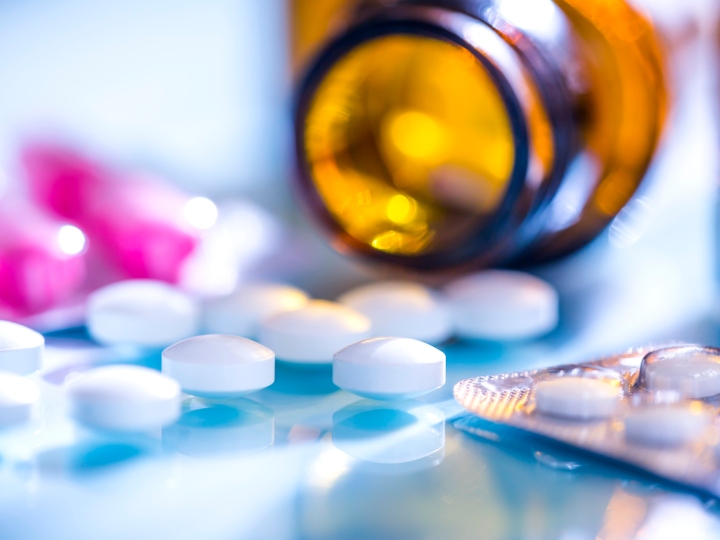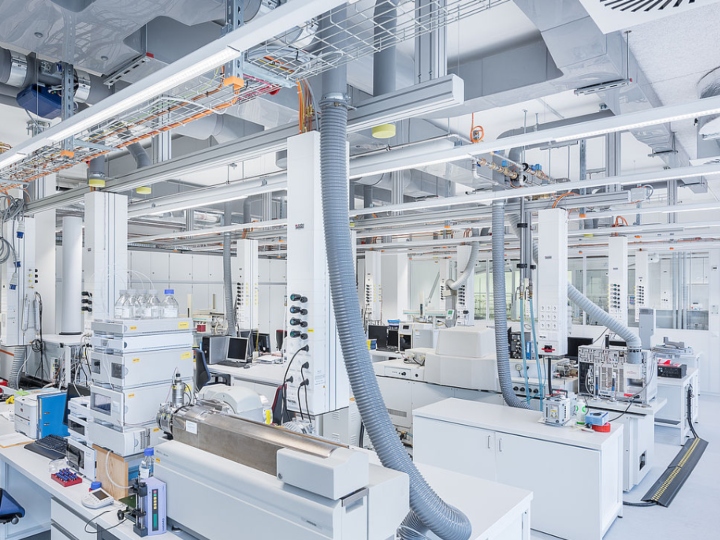Genotoxic impurities analysis to assess and control DNA reactive mutagenic impurities in pharmaceuticals. Our GMP labs support the identification, quantification and control genotoxic impurities in APIs and drug products.
Assessment of genotoxic impurities in pharmaceuticals is critical to address the purity, safety and quality of drug substances or drug products related to potential mutagenic and genotoxic impurities. The ICH M7(R2) outlines recommendations for assessment and control of mutagenic impurities that may be present in final drug substance or product, taking into consideration the intended conditions of human use. Mutagenic impurities in pharmaceuticals are DNA reactive substances that have the potential to directly cause DNA damage when present at low levels leading to mutations and therefore, potentially causing cancer. A related term, “genotoxicity,” has a broader definition than mutagenicity. The ICH M7 defines “genotoxicity” as “A broad term that refers to any deleterious change in the genetic material regardless of the mechanism by which the change is induced.”
There are a range of sources of genotoxic impurities, contributed to reactive materials used in drug substances, which have the capacity to interact with human DNA to cause mutations and cancer, even at extremely lowest levels. Production processes used to manufacture drug substances often use electrophilic agents to assist with carbon−carbon, carbon−nitrogen, carbon−oxygen, and carbon−sulfur bond formation such as alkylating agents, benzyl halides and Michael acceptors. Some electrophilic agents may react with DNA, leading to concerns focused on the presence of these potential carcinogens in a drug substance – these would be categorized as genotoxic impurities. Classes of genotoxic impurities include a group of potentially high potency mutagenic carcinogens, which have “alerting structures” such as N-nitroso-, aflatoxin-like-, and alkyl-azoxy compounds. and are referred to as the “cohort of concern.”
Identifying mutagenic and genotoxic impurities early in the drug development process and/or limiting genotoxic impurities at acceptable levels in the API or drug product, can avoid risks associated with drug safety and quality later in development and/or marketing authorisation, that could potentially lead to expensive recalls. A key example of this are nitrosamine impurities such as N-nitrosodimethylamine (NDMA) which have been highlighted by the US FDA (2018) and other regulatory authorities as an area for concern.
Regulatory authorities in both Europe and the United States of America (USA) have issued guidance on the genotoxic impurities limits in drug substances. These require the control of potentially genotoxic impurities at parts per million levels in drug substances – depending on type and specific toxicity. Determination of genotoxic impurities at trace levels (typically lower than 0.01-0.03%) requires highly sensitive and specific analytical approaches that are suitable for the sample matrices of interest and ideally allow coverage of max. daily exposure levels of 1.5 ug/day and even below this for some specific compounds of cohort of concern. Depending on the maximum permitted daily exposure level of a harmful compound, the max. daily dose of the drug product defines the concentration of the impurity, which needs to be monitored or controlled. For high daily doses a very low LOQ could be required.
Analytical Control Strategy Support
An appropriate control strategy leveraging process understanding and/or analytical controls should be developed to ensure that the mutagenic impurity is at or below the acceptable cancer risk level. A key component of your control strategy is appropriate analytical testing. Our GCP / GLP / GMP compliant laboratories provide analytical services to detect and evaluate the potential mutagenic and genotoxic impurities in your raw material, starting material, intermediate, API or drug substances, supporting your product development from an early stage to market release.
With scientists who are adept at method development and validation of suitable analytical procedures, we can overcome the challenges of low detection levels and difficult matrices. Using a range of technologies we can apply an orthogonal approach to ensure robust, specific and sensitive analysis. Our comprehensive characterisation techniques include:
- High Performance Liquid Chromatography with (HPLC with UV/Vis detectors)
- Gas Chromatography (GC) and GC-MS
- Liquid Chromatography-Mass Spectrometry (LC-MS)
- Inductively-Coupled Plasma Optical Emission Spectroscopy
- (ICP-OES) and Inductively- Coupled Plasma Mass Spectrometry (ICP-MS)
- Nuclear Magnetic Resonance Spectroscopy (NMR)
As part of our comprehensive stability study capability, we examine degradation products under stressed conditions to help establish degradation pathways. For a potential degradation product that has been characterized as mutagenic, it is important to understand if the degradation pathway and a well- designed accelerated stability study (e.g., 40°C/75% relative humidity, 6 months) in the proposed packaging, with appropriate analytical procedures is recommended to determine the relevance of the potential degradation product. Additionally, we offer highly sensitive and specific method development and validation expertise which is required to address the issues of genotoxic impurities including nitrosamines screening and quantification.
Toxicological Risk Assessment
With many years of experience in toxicological risk assessments, our consultants conduct risk assessments to address the issues associated with exposure to genotoxic impurities and other substances of concern including residual solvents, process impurities, extractables & leachables, elemental impurities (ICH Q3D) and other substances that may find their way into a pharmaceutical product.
Total Quality Assurance for Genotoxic and Mutagenic Impurities Analysis
Genotoxic impurity testing is one aspect of our global GMP and CMC laboratory services solutions, which include pharmaceutical impurity analysis, stability testing, quality control (QC) and batch release testing. Bringing quality and safety to life, we offer Total Quality Assurance expertise to help you to meet and exceed quality, safety and regulatory standards.
Requirements for Elemental Impurities Testing
- White Paper download: Requirements for USP <232> and USP <233> elemental impurities testing. Download now
- Brochure download: Elemental Analysis, Elemental Impurity Analysis
- USP 233 and USP 232 Services
- ICH Q3D Risk Assessment and Testing
- Trace Metals Testing for Pharmaceuticals
- Pharmaceutical Impurity Testing
Recorded Webinars
- NEW: Regulatory Driven E and L Studies for Key Drug Delivery Formats
- Design of Robust and Sensitive Extractables and Leachables Studies
- Extractables and Leachables Studies on Process Materials and Container Closure Systems
- Biocompatibility - The Importance of Extractables & Leachables Testing
Whitepapers
- NEW: Risk-Based E&L Strategies for Bioprocessing Single-Use Systems
- From Extractables to Leachables: Problem Solving for Complicated Formulations and Container Closure Systems
- Evaluation of Extraction Conditions for Volatile Extractables
- Extractables and Leachables Strategies for Pharmaceutical Production Tubing
- Importance of a High Performing GC-MS Screening for Testing Stability Samples for Volatile and Semi-Volatile Leachable Impurities
- Impact of the GC-MS Injection Solvent and the Analyte Concentration on Relative Responses for common Extractables
- Extractables and Leachables Strategies for Transdermal Patch Products
- Trace Analytical Methods and Techniques for Testing Extractables and Leachables

Resources
- App Note: Determination of Low/Trace Level Benzene in Pharma Excipients and Finished Products
- Webinar: Design of Extractables Leachables Studies
- Article: Nitrosamine Impurity Screening in Drugs
- Webinar: E/L Studies for Process Materials and Container Closure Systems
- Webinar: ID & Quantification of Pharma Impurities

Pharmaceutical News & Events
- PRESS RELEASE: Lab expansion to enhance capabilities in inhaled biologics drug development
- PRESS RELEASE: Intertek partners with CrystecPharma to advance formulation science and accelerate development for dry powder inhalers
- NEW! Blog: Optimising Quality in Pharma Supply Chains
- Determination of Particles in Pharmaceuticals - Article
- Discover our Audit Live Tool for direct access to our scheduled audits
- Extractables/Leachables Lab Tour - Request access
- Medical Device Extractables & Leachables Studies
- Glycosylation Analytical Approaches for Antibody Therapeutics
- Rapid Determination of Low/Trace Level Benzene in Pharmaceutical Excipients and Finished Products

